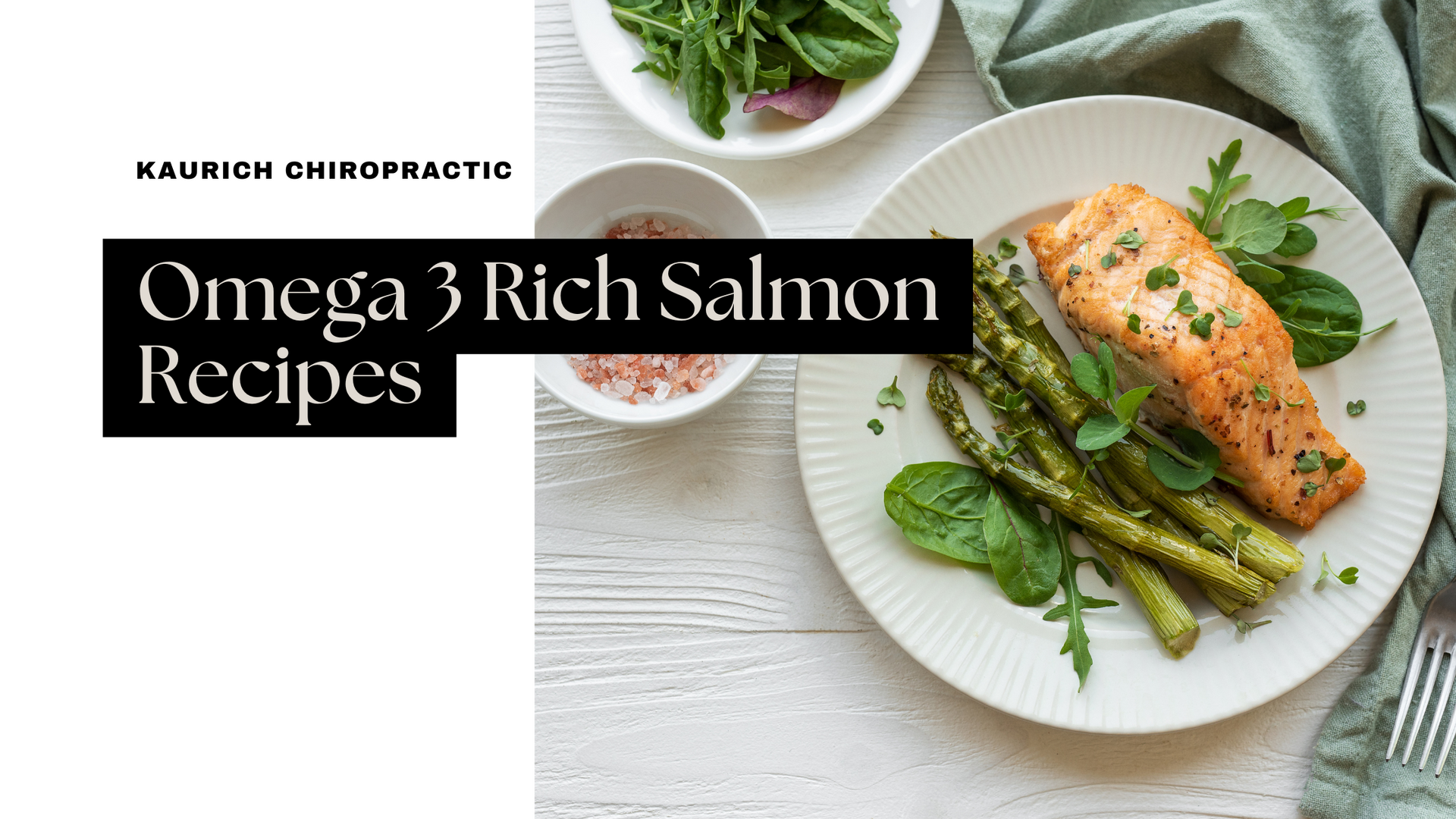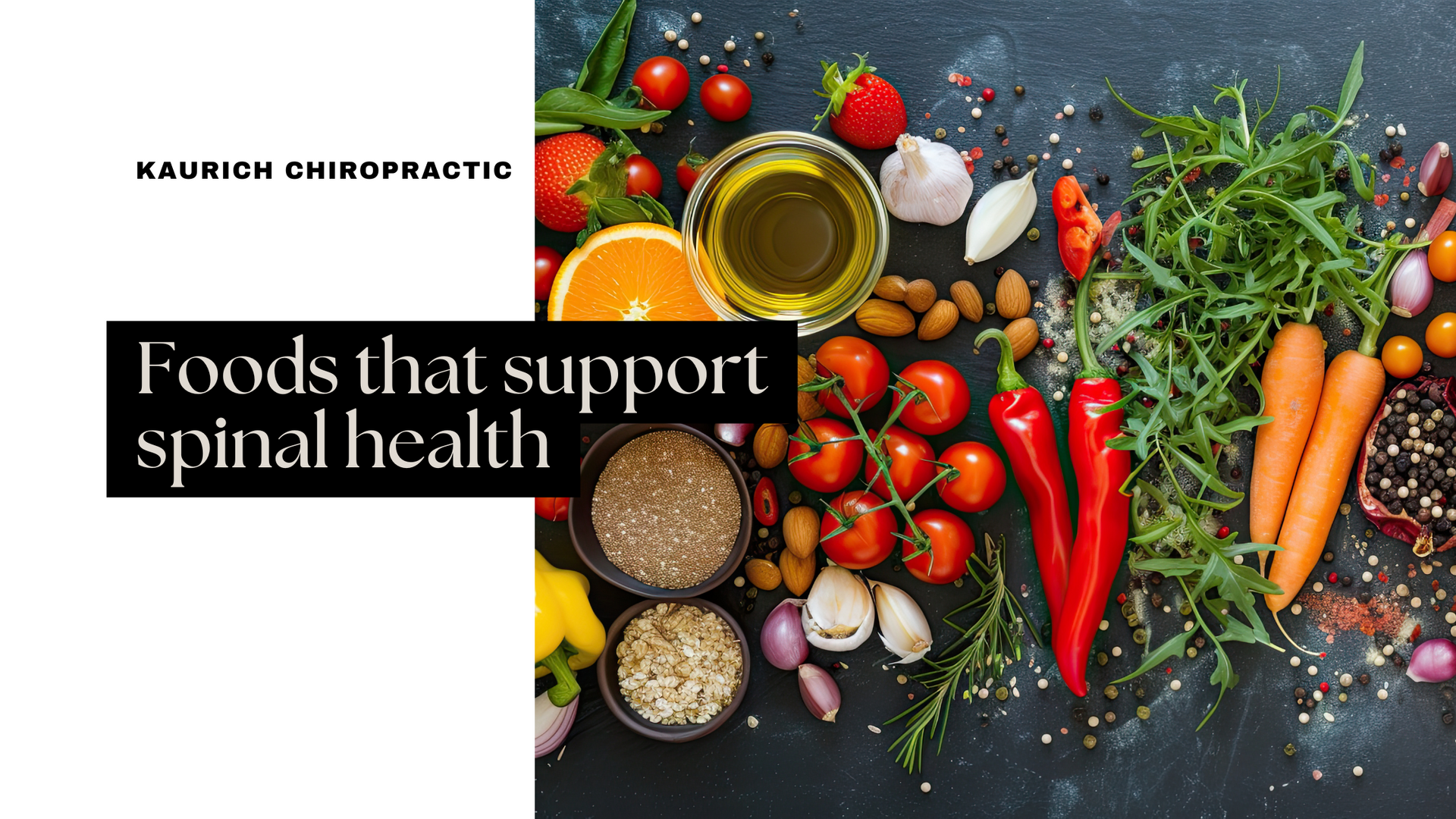What is Functional Medicine and How Can It Help You?

In a world where healthcare is often focused on symptom management rather than holistic healing, functional medicine offers a refreshing and personalized approach to well-being. But what exactly is functional medicine, and how can it make a difference in your health? Let’s explore.
What is Functional Medicine?
Functional medicine is a branch of healthcare that looks beyond just the symptoms of illness. Instead of focusing solely on the disease itself, functional medicine practitioners aim to identify the underlying causes of chronic conditions. It’s a patient-centered approach that recognizes that each individual’s body, genetics, lifestyle, and environment are unique, so treatments should be personalized as well.
In functional medicine, the body is seen as an interconnected system, not as a collection of separate organs. For example, a digestive issue might not only be treated as a gut problem, but it may also be linked to stress, nutrition, or hormonal imbalances. The goal is to restore balance to the body by addressing the root causes of illness, rather than merely alleviating symptoms.
Key Principles of Functional Medicine
Patient-Centered Care
Unlike conventional medicine, which often focuses on treating diseases with standardized treatments, functional medicine prioritizes the individual. The focus is on understanding your lifestyle, genetics, and environment to create a treatment plan tailored to your unique needs.
Focus on Root Causes
Functional medicine practitioners look for the root causes of disease, rather than merely masking symptoms. This may involve extensive testing and a deep dive into factors like diet, stress, genetics, and environmental exposures.
Holistic Approach
Functional medicine emphasizes the importance of the body’s interconnectedness. It recognizes that one issue in the body can affect many other areas. For example, a hormone imbalance may contribute to sleep problems, which in turn affect your energy levels, mood, and immune system.
Prevention and Wellness
Functional medicine is not just about treating illness—it’s also about promoting health and preventing disease before it starts. By focusing on nutrition, exercise, stress management, and overall well-being, functional medicine helps you maintain long-term health.
How Can Functional Medicine Help You?
Functional medicine can be especially helpful if you have chronic conditions that haven't responded well to traditional treatments, or if you're simply looking to improve your overall health and wellness. Here are some ways functional medicine can help you:
1. Chronic Illness Management
If you're dealing with chronic conditions like autoimmune diseases, diabetes, or digestive disorders, functional medicine can offer a new perspective. By identifying underlying imbalances or triggers (like food sensitivities, toxins, or infections), functional medicine provides targeted therapies that can complement conventional treatments.
2. Personalized Health Plans
Whether you struggle with fatigue, weight gain, hormone imbalances, or stress, functional medicine focuses on crafting a personalized treatment plan. This might include dietary changes, supplements, stress management techniques, or lifestyle changes tailored to your specific needs.
3. Digestive Health
Many people suffer from digestive issues like bloating, constipation, or irritable bowel syndrome (IBS). Functional medicine goes beyond just treating symptoms; it looks for the underlying causes, such as food sensitivities, gut bacteria imbalances, or inflammation, to promote better digestive health.
4. Balanced Hormones
Hormonal imbalances can lead to a variety of symptoms, from fatigue and weight gain to mood swings and sleep disturbances. Functional medicine can help identify the root causes of hormonal imbalances, whether they are due to stress, diet, or other factors, and provide natural and effective treatments.
5. Improved Mental Health
Many individuals struggle with anxiety, depression, and mood disorders. Functional medicine understands that mental health is deeply connected to physical health. Imbalances in gut health, inflammation, blood sugar, or nutrient deficiencies can all play a role in mental wellness. Functional medicine practitioners work with you to address these factors and improve both your mind and body.
6. Enhanced Energy Levels
Persistent fatigue is a common issue in today’s busy world. Whether it’s due to poor sleep, stress, nutrient deficiencies, or underlying health conditions, functional medicine aims to uncover the reasons behind low energy and help restore vitality through natural methods.
7. Preventative Health
Functional medicine isn’t just about treating disease—it’s also about preventing it. With a focus on nutrition, lifestyle changes, and early interventions, functional medicine helps you take control of your health, improve your well-being, and reduce your risk for chronic diseases down the road.
What to Expect When You Visit a Functional Medicine Practitioner
If you're considering functional medicine, here's what you can expect during a visit:
Comprehensive Health History
Functional medicine practitioners take the time to understand your complete health history, including lifestyle habits, diet, family history, and environmental exposures. This detailed background helps them create a more personalized treatment plan.
Laboratory Testing
Blood tests, stool tests, hormone panels, and other diagnostic tools may be used to identify any underlying issues. Functional medicine practitioners often look for imbalances or hidden conditions that may not be detected through standard testing.
A Holistic Treatment Plan
Based on your history and lab results, a functional medicine practitioner will develop a treatment plan that focuses on diet, lifestyle changes, supplements, and stress management techniques. This approach may take time, but it addresses the root cause of health issues rather than simply masking the symptoms.
Ongoing Support
Functional medicine is not a quick fix. It often requires commitment and time to see significant results. You’ll likely have regular follow-up appointments to monitor progress, adjust the treatment plan as needed, and ensure your body is healing and restoring balance.
Is Functional Medicine Right for You?
Functional medicine may be especially beneficial if you're struggling with a chronic condition that hasn't improved with conventional treatments, or if you’re simply looking for a more comprehensive, personalized approach to your health. While it may not be right for every individual or condition, it offers a powerful, patient-centered alternative for those seeking to understand and address the root causes of their health challenges.
By partnering with a functional medicine practitioner, you can unlock the full potential of your body, leading to better long-term health, improved quality of life, and a deeper understanding of your own unique needs.
Functional medicine is a groundbreaking, holistic approach to healthcare that focuses on identifying the underlying causes of illness and developing personalized treatment plans. By addressing the root causes of your health issues—whether it's poor nutrition, stress, or environmental factors—it empowers you to take control of your health and wellness. If you're seeking a deeper understanding of your health, or if traditional medicine has not fully resolved your issues, functional medicine might be just what you need to achieve lasting vitality and well-being.
Ready to take a step towards better health? Consider exploring functional medicine and unlock the potential of a more balanced, vibrant life. 574-282-2828
Call Us
Phone support is open from 9 to 5.
Feel free to give us a call.
574-282-2828
Email Us
For general inquiries & questions,
contact us via email
kevin@drkaurich.com
Visit Us
21421 Cleveland Rd
South Bend, IN 46628
View on Map

March 26, 2025
1 (15 oz) can black beans, drained and rinsed 1/2 cup corn 1/2 bell pepper, chopped 1/2 onion, chopped 1/4 cup cilantro, chopped 1 tablespoon butter or oil 1/2 teaspoon each: paprika, garlic powder, onion powder, cumin, salt, black pepper Juice of 1 lime 1 1/2 cups shredded mozzarella or Mexican blend cheese 2 cups cooked rice (optional) 8 medium flour tortillas Oil or cooking spray, for pan

March 24, 2025
As the weather warms up and outdoor activities become more frequent, it’s essential to prioritize two key factors for overall well-being: hydration and posture. Whether you're hiking, biking, running, or simply enjoying time outside, these elements play a crucial role in maintaining energy, preventing injuries, and keeping your body functioning at its best. Why Hydration Matters Water is vital for nearly every bodily function, and staying properly hydrated is especially important when engaging in outdoor activities. Here’s why: ✅ Regulates Body Temperature – Sweating helps cool the body, but without enough water, you risk overheating and dehydration. ✅ Prevents Muscle Cramps – Dehydration can lead to muscle fatigue and cramping, reducing performance and increasing injury risk. ✅ Boosts Energy & Focus – Even mild dehydration can cause fatigue, dizziness, and difficulty concentrating. ✅ Supports Joint & Spine Health – Water helps lubricate joints and maintain spinal disc hydration, reducing stiffness and discomfort. 💡 Tip: Carry a reusable water bottle and sip regularly, especially in hot or humid conditions. Electrolyte-rich drinks can be helpful after prolonged activity. The Role of Posture in Outdoor Activities Proper posture is just as important as hydration, helping to prevent injuries and ensuring your body moves efficiently. Here’s how posture affects different activities: 🏃♂️ Running & Walking – Maintain an upright posture with shoulders relaxed and core engaged to avoid back and neck strain. 🚴 Cycling – Keep your back straight and adjust your bike seat to prevent hunching over, which can cause lower back pain. 🥾 Hiking – Use your legs for stability, keep your spine aligned, and avoid slouching, especially when carrying a backpack. 🌿 Gardening & Yard Work – Bend at the knees, not the waist, to protect your lower back from strain. 💡 Tip: Stretch before and after activity to maintain flexibility and prevent stiffness. Regular chiropractic care can also help with alignment and posture correction. Stay Hydrated, Stay Aligned, Stay Active! By prioritizing hydration and proper posture, you can make the most of your outdoor adventures while reducing discomfort and injury risk. If you're experiencing joint pain, muscle tension, or posture-related issues, chiropractic care can help keep your body in top shape. Stand tall, drink up, and enjoy the great outdoors!

March 5, 2025
Sleep Awareness Week is the perfect time to focus on something we all need but often struggle to get—quality sleep. If you find yourself tossing and turning at night, waking up with aches and pains, or feeling groggy in the morning, your spine and nervous system might be playing a bigger role than you think. The Connection Between Chiropractic Care and Sleep Your spine and nervous system control how your body functions, including your ability to relax and recharge at night. Misalignments in the spine (subluxations) can create tension, discomfort, and nervous system imbalances that interfere with restful sleep. That’s where chiropractic care can help. 1. Reducing Pain for Deeper Sleep Chronic pain—especially in the neck, back, and joints—can make it hard to get comfortable at night. Chiropractic adjustments help relieve tension, reduce inflammation, and promote better spinal alignment, allowing your body to relax more easily. 2. Managing Stress and Promoting Relaxation Your nervous system plays a major role in stress management. When the spine is out of alignment, it can contribute to increased stress, making it harder to unwind. Chiropractic care helps regulate the nervous system, reducing cortisol (the stress hormone) and promoting a sense of calm—essential for quality sleep. 3. Supporting Better Breathing and Sleep Apnea Relief Misalignments in the spine can affect the muscles and nerves responsible for breathing. Chiropractic adjustments may improve airway function and help reduce sleep apnea symptoms, making breathing easier during sleep. 4. Improving Sleep for All Ages Studies have shown that chiropractic care can benefit not just adults, but also children who struggle with sleep disturbances, colic, or restlessness. Proper spinal alignment allows their growing bodies to function optimally, leading to more restful nights. Simple Tips for Better Sleep Along with chiropractic care, here are some tips to improve your sleep quality: ✅ Maintain a Consistent Sleep Schedule – Go to bed and wake up at the same time every day. ✅ Create a Relaxing Bedtime Routine – Avoid screens, caffeine, and heavy meals before bed. ✅ Check Your Pillow and Mattress – A supportive mattress and pillow that align with your spine can make a big difference. ✅ Stretch Before Bed – Gentle stretching or yoga can relieve tension and relax your body for sleep. ✅ Get Regular Adjustments – Chiropractic care keeps your spine aligned and your nervous system balanced for optimal rest. Ready to Sleep Better? We Can Help! If you’re struggling with poor sleep, pain, or stress, chiropractic care may be the missing piece to your wellness routine. During Sleep Awareness Week, make a commitment to your health by prioritizing better rest. Contact us today to schedule an appointment and take the first step toward better sleep and better health! 📞 Call us at 574-282-2828 📍 Visit us at 21421 Cleveland South Bend, Indiana 46628 🌐 Book Online: https://www.kaurichchiropractic.com/

March 3, 2025
Why People Experience More Activity-Related Injuries in Spring As the weather warms up and daylight hours increase, many people feel motivated to get outside and be more active. Whether it's jogging, hiking, gardening, or playing sports, spring invites a surge in physical activity. However, this seasonal shift also comes with an increased risk of injuries. Understanding why injuries are more common in the spring can help you take steps to prevent them and stay active safely. 1. Sudden Increase in Activity Levels During the winter months, many people adopt a more sedentary lifestyle. When spring arrives, they often jump into physical activities without properly preparing their bodies. This sudden increase in movement can lead to muscle strains, joint pain, and even more serious injuries like sprains or fractures. 2. Deconditioned Muscles and Joints A lack of regular movement during winter can cause muscles to weaken and joints to become less flexible. Without proper conditioning, the body is more susceptible to injuries when engaging in high-impact or repetitive activities such as running or cycling. 3. Increased Outdoor Sports Participation Spring is a popular time for sports like baseball, soccer, and tennis. These sports involve quick movements, sudden stops, and twisting motions that can put stress on the muscles and joints. Without proper warm-ups and stretching, athletes are at a higher risk of sprains, ligament tears, and overuse injuries. 4. Uneven Terrain and Unpredictable Weather Outdoor environments can pose additional risks. Trails, parks, and fields may have uneven surfaces, leading to ankle sprains or falls. Additionally, unpredictable spring weather, including rain and wet conditions, can make outdoor surfaces slippery, increasing the chances of injury. 5. Overexertion and Enthusiasm The excitement of warmer weather can sometimes lead people to push themselves too hard, too soon. Overexertion without proper pacing or rest can cause fatigue-related injuries, including muscle cramps, stress fractures, and tendonitis. How to Prevent Spring Activity Injuries Gradually increase activity levels to allow your body to adjust. Stretch and warm up properly before engaging in physical activity. Strengthen muscles and improve flexibility with targeted exercises. Stay hydrated and listen to your body to avoid overexertion. Use proper gear and footwear to support your joints and prevent falls. Consider chiropractic care to keep your body aligned and functioning optimally. Spring is a wonderful time to get moving, but staying mindful of these risks can help ensure a pain-free and enjoyable season. By taking preventative measures, you can make the most of your favorite spring activities without injury!

February 19, 2025
Directions Prepare the Salmon: Start by patting the salmon fillet dry with a paper towel. Remove the skin if preferred and cut the fillet into bite-sized cubes. Heat the Pan: Heat olive oil in a large skillet over medium heat. Once hot, add the salmon bites, placing them in a single layer. Sear the pieces for 2-3 minutes on each side until they are golden brown and cooked through. Remove the salmon from the skillet and set aside. Make the Sauce: In the same skillet, lower the heat slightly and add minced garlic. Sauté for about 30 seconds until fragrant. Stir in honey, soy sauce, and lemon juice. Let the mixture simmer for 2-3 minutes until it thickens slightly. Thicken the Glaze: In a small bowl, whisk cornstarch with water to create a slurry. Slowly add this to the simmering sauce, stirring constantly to ensure no lumps form. Cook for another minute or two until the glaze reaches a rich, glossy consistency. Coat the Salmon: Return the salmon bites to the skillet and gently toss them in the honey garlic glaze until fully coated. Let them warm through for about 1-2 minutes. Serve: Transfer the salmon bites to a serving plate, garnish with chopped fresh parsley if desired, and enjoy immediately.

January 27, 2025
When you’re looking to increase the protein in your diet, plan each meal with a protein source in mind. If you’re aiming to eat more protein without overdoing it or losing sight of other nutritional needs, one of the easiest ways is to start tracking your food. Meat, Poultry, and Game Bacon, turkey (2 slices / 16 g): 5 g of protein Beef, cooked (3 oz / 85 g): 21 g of protein Bison, cooked and ground (3 oz / 85 g): 22 g of protein Chicken breast, cooked (3 oz / 85 g): 26 g of protein Chicken thighs, cooked (3 oz / 85 g): 21 g of protein Duck, cooked (3 oz / 85 g): 20 g of protein Ground turkey, cooked (3 oz / 85 g): 23 g of protein Italian sausage, cooked (1 link / 75 g): 14 g of protein Lamb, cooked (3 oz / 85 g): 21 g of protein Pork, cooked (3 oz / 85 g): 22 g of protein Pork chops, cooked (3 oz / 85 g): 23 g of protein Quail, cooked (3 oz / 85 g): 21 g of protein Rabbit, cooked (3 oz / 85 g): 27 g of protein Turkey breast, cooked (3 oz / 85 g): 26 g of protein Veal, cooked (3 oz / 85 g): 22 g of protein Venison, cooked (3 oz / 85 g): 24 g of protein Dairy & Eggs Cheddar cheese (1 oz / 28 g): 7 g of protein Cottage cheese (1/2 cup / 112 g): 13 g of protein Eggs, whole (1 large): 6 g of protein Feta cheese (1 oz / 28 g): 4 g of protein Greek yogurt, plain (6 oz / 170 g): 17 g of protein Ice cream, vanilla (1 cup / 135 g): 5 g of protein Kefir (1 cup / 240 mL): 8-11 g of protein Milk (1 cup / 240 mL): 8 g of protein Mozzarella cheese (1 oz / 28 g): 7 g of protein Parmesan cheese (1 oz / 28 g): 10 g of protein Ricotta cheese (1/2 cup / 124 g): 12 g of protein Swiss cheese (1 oz / 28 g): 8 g of protein Yogurt, plain (1 cup / 245 g): 13 g of protein Nuts and Seeds Almonds (1 oz / 28 g): 6 g of protein Chia seeds (2 tbsp / 28 g): 5 g of protein Flaxseeds (2 tbsp / 14 g): 3 g of protein Hemp seeds (3 tbsp / 30 g): 9 g of protein Nuts (mixed, 1 oz / 28 g): 5 g of protein Pistachios (1 oz / 28 g): 6 g of protein Pumpkin seeds (1 oz / 28 g): 8 g of protein Sunflower seeds (1 oz / 28 g): 6 g of protein Walnuts (1 oz / 28 g): 4 g of protein Grains and Pseudograins Amaranth, cooked (1 cup / 246 g): 9 g of protein Buckwheat, cooked (1 cup / 168 g): 6 g of protein Bulgur wheat, cooked (1 cup / 182 g): 6 g of protein Farro, cooked (1 cup / 195 g): 12 g of protein Nutritional yeast (1 tbsp / 5 g): 2.5 g of protein Oats, cooked (1 cup / 240 g): 5 g of protein Quinoa, cooked (1 cup / 170 g): 8 g of protein Teff, cooked (1 cup / 252 g): 10 g of protein Udon noodles, cooked (1 cup / 180 g): 7 g of protein Ziti pasta, cooked (1 cup / 140 g): 8 g of protein Vegetables Asparagus, cooked (1 cup / 180 g): 4 g of protein Black-eyed peas, cooked (1/2 cup / 93 g): 7 g of protein 93g /7g protein Broccoli, cooked (1 cup / 156 g): 4 g of protein Eggplant, cooked (1 cup /95 g): 1 g of protein Green peas, cooked (1 cup / 160 g): 9 g of protein Jicama (1 cup / 130 g): 1 g of protein Kale, cooked (1 cup / 130 g): 4 g of protein Mushroom, white (1 cup/155g0g 5.6 g of protein Peas, cooked (1/2 cup /80 g): 4 g of protein Spinach, cooked (1 cup / 180 g): 6 g of protein Watercress, raw (1 cup / 34 g): 1 g of protein Zucchini, cooked (1 cup / 180 g): 2 g of protein Legumes Black beans, cooked (1/2 cup / 90 g): 8 g of protein Chickpeas, cooked (1/2 cup / 90 g): 8 g of protein Edamame, cooked (1/2 cup / 78 g): 8 g of protein Garbanzo beans (1/2 cup / 90 g): 8 g of protein Kidney beans, cooked (1/2 cup / 90 g): 7 g of protein Lentils, cooked (1/2 cup / 90 g): 9 g of protein Lima beans, cooked (1/2 cup / 90 g): 5 g of protein Red lentils, cooked (1/2 cup / 90 g): 9 g of protein Fruits Avocado, one fruit (150 g): 3 g of protein Banana, one fruit (126 g): 1 g of protein Dates, dried (1/4 cup / 40 g): 1 g of protein Jackfruit (1 cup / 178 g): 4 g of protein

January 13, 2025
A healthy diet can play a significant role in supporting spinal health by providing essential nutrients that strengthen bones, maintain spinal discs, and reduce inflammation. Here are some foods and nutrients to include: 1. Calcium-Rich Foods Calcium is crucial for maintaining strong bones, including the vertebrae in your spine. Examples: Dairy products (milk, yogurt, cheese), leafy greens (kale, spinach, collard greens), almonds, fortified plant-based milk. 2. Vitamin D Vitamin D helps your body absorb calcium effectively. Examples: Fatty fish (salmon, mackerel), egg yolks, fortified foods, or safe sun exposure for natural vitamin D production. 3. Omega-3 Fatty Acids Omega-3s have anti-inflammatory properties, which can help reduce back pain caused by inflammation. Examples: Fatty fish (salmon, sardines), walnuts, flaxseeds, chia seeds. 4. Magnesium Magnesium supports muscle and nerve function and helps maintain bone density. Examples: Nuts (almonds, cashews), seeds, whole grains, avocados, and bananas. 5. Collagen-Boosting Foods Collagen supports the spinal discs and connective tissues. Examples: Bone broth, citrus fruits (for vitamin C to aid collagen production), berries, and fish. 6. Anti-Inflammatory Foods These foods help combat inflammation, which can contribute to spinal pain and stiffness. Examples: Turmeric, ginger, green tea, leafy greens, and colorful fruits like berries and oranges. 7. Hydrating Foods Spinal discs need water to maintain their cushioning properties. Examples: Water-rich foods like cucumbers, watermelon, oranges, and soups, along with plenty of plain water. 8. Protein-Rich Foods Protein is essential for repairing tissues, including muscles and ligaments around the spine. Examples: Lean meats, fish, eggs, tofu, legumes, and nuts. 9. Foods Rich in Vitamin K Vitamin K supports bone health by helping regulate calcium. Examples: Leafy greens (kale, spinach), broccoli, and Brussels sprouts. 10. Zinc-Rich Foods Zinc aids tissue repair and supports the healing process. Examples: Shellfish, nuts, seeds, and whole grains. Tips for Optimal Spinal Health Maintain a balanced diet with a variety of whole foods. Limit processed foods, sugary snacks, and trans fats that can promote inflammation. Stay hydrated to support overall disc and joint health. Pairing a nutritious diet with regular exercise, good posture, and proper lifting techniques can help keep your spine healthy and strong for years to come! 💪

January 8, 2025
We know that inflammation plays a huge role in the pain we feel - but what can we do about it at home? Eat anti-inflammatory meals! Try this easy, one-pot dinner that is packed with anti-inflammatory and seasonal ingredients to help you feel your best. Ingredients 2 tablespoons olive oil 1 ½ pounds boneless, skinless chicken thighs, trimmed and halved 1 teaspoon salt, divided 1 teaspoon ground pepper, divided 6 cloves garlic, minced 1 shallot, thinly sliced 1 pound carrots, peeled, halved lengthwise, and cut into 2-inch pieces (3 cups) 1 pound parsnips, peeled, quartered lengthwise, and cut into 2-inch pieces (3½ cups) 1 pound Brussels sprouts, trimmed and halved 1 teaspoon smoked paprika ½ cup dry white wine 1 cup low-sodium chicken broth, divided 5 sprigs fresh thyme or ½ tsp. dried Directions Preheat oven to 450°F. Heat oil in a large ovenproof skillet, such as cast-iron, over medium-high heat. Pat chicken dry with paper towels. Sprinkle the chicken with ½ tsp. each salt and pepper. Cook until browned on both sides, about 5 minutes total. Transfer the chicken to a clean plate and set aside. Add garlic and shallot to the pan; cook, stirring often, until fragrant, about 1 minute. Add carrots, parsnips, Brussels sprouts, smoked paprika, and the remaining ½ tsp. each salt and pepper. Cook, stirring occasionally, until the vegetables are browned but still crisp, 6 to 8 minutes (add a little water, if necessary, to prevent scorching). Stir in wine, scraping the pan to loosen browned bits. Stir in broth. If using fresh thyme, tie the sprigs together with butcher's twine or secure in a cheesecloth bag. Add the thyme bundle to the pot, gently pressing into the liquid (or sprinkle in the dried thyme). Transfer the pan to the oven. Bake for 10 minutes. Nestle the chicken into the vegetable mixture and bake until an instant-read thermometer inserted into the thickest part of the chicken registers 165°F and the vegetables are tender, about 10 minutes longer. Remove and discard the thyme sprigs, if using. Stir the vegetables before serving.
Contact Information
Phone: (574) 282-2828
Email: kevin@drkaurich.com
Address: 21421 Cleveland South Bend, Indiana 46628
se habla espanol
Business Hours
- Mon, Thu
- -
- Tuesday
- -
- Wednesday
- -
- Friday
- -
- Saturday
- Appointment Only
- Sunday
- Closed
Sunday: Closed
New Paragraph
Content, including images, displayed on this website is protected by copyright laws. Downloading, republication, retransmission or reproduction of content on this website is strictly prohibited. Terms of Use
| Privacy Policy




